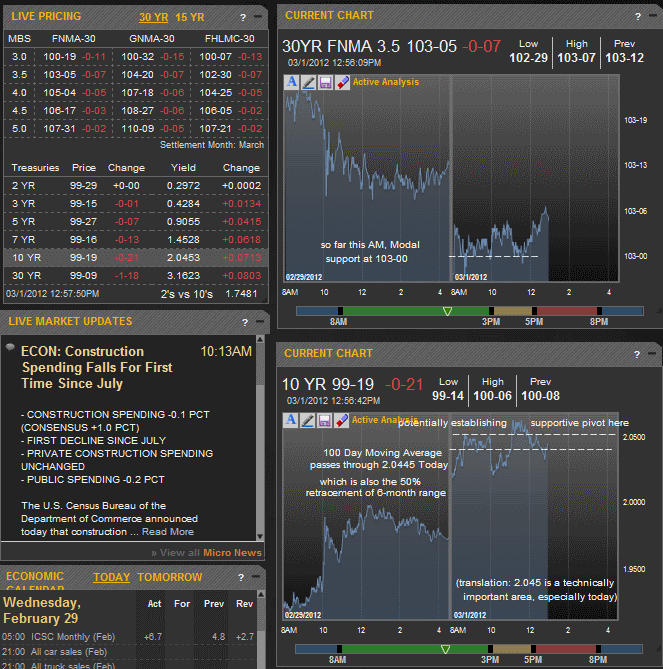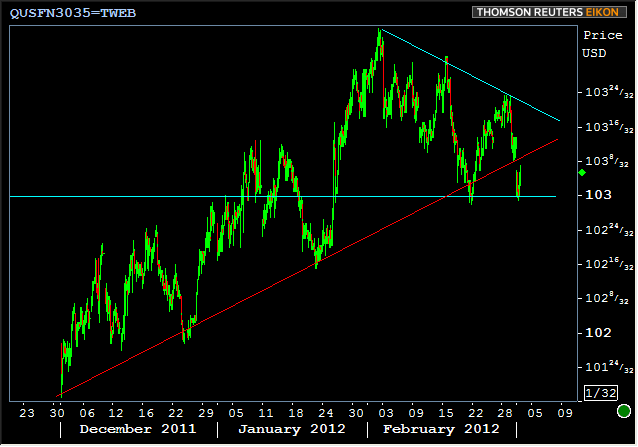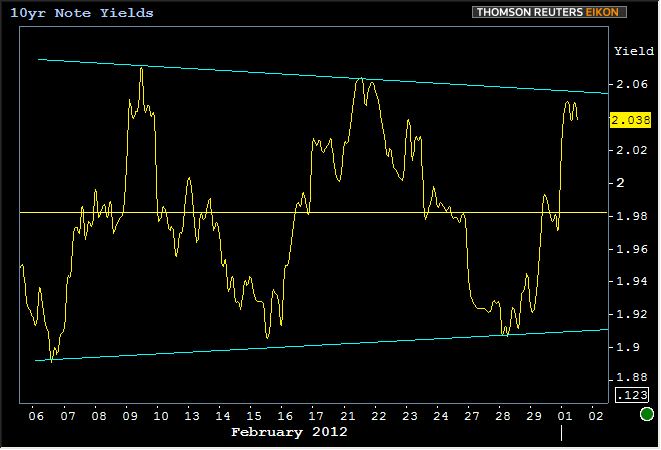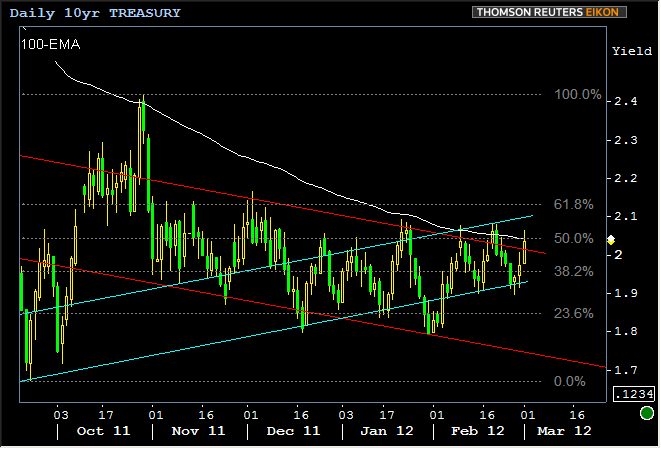MBS continue to trade in the red into the afternoon basically in the same range as this morning. Despite the jump lower in prices today, we're still trading yesterday's events and momentum, while today's economic data and events, if anything, have served to reinforce the technical support levels that we already stood a good chance of seeing.

The technical landscape has definitely been fascinating, if not somewhat boring and dare we say, predictable?! Granted, relatively big losses in MBS are never boring in terms of the damage done to rate sheets, but Fannie 3.5's continue to trade over 103-00! If the big picture is of any consolation to you, that's about a point higher than 2010's best levels. The 103-00 level was also the next logically supportive pivot point after breaking 103-10 at the open.

Continuing the theme of predictability and technically fascinating market movements, let's look at 10's. We've mentioned in the past, and will mention again now, that it can sometimes be useful to divide trading months not by their calendar dates, but rather by Non-Farm-Payrolls dates. Although that's a bit counterintuitive when Europe is such a factor in US Treasuries trading, we're going to do it anyway, partly because we haven't moved outside this month's highs or lows since the Greek bailout vote and mostly because it looks cool and let's us observe cool facts about the range.
The first cool fact about Post-NFP February is that the linear regression of the trading range is PERFECTLY flat and perfectly on the yellow line in the chart below. That means that 10yr yields have been above and below that line in equal amounts during this time. The second cool fact is that the major highs and lows have been evenly spaced (as you can see), have been progressively steady or more central to the range, and have both been about the same distance away from the midpoint (roughly 2 standard deviations in either case).

Long story short, February (and the pre-NFP part of March) has been quite volatile, BUT contained within a historically narrow range, not to mention the relative regularity of the peaks and valleys. In an even broader context, there's some evidence that February's lows can be considered as reinforcing a gradual uptrend in yields. Yes, this is troublesome for bond markets and MBS. That uptrend is seen in the teal lines in the chart below.

You'll also notice a longer and broader downtrend indicated by the red lines. It's still too soon to consider this trend as having been defeated, but it's certainly come under more attack recently, not only in terms of yields testing it's upper boundaries more frequently, but also in the sense that the exploration and testing of it's lower boundaries seems to have subsided. In other words, if a battle is being fought between uptrends and downtrends, the former has the latter against the ropes.
Even that wouldn't be cause for too much panic for MBS devotees. Assuming the downtrend is defeated, we then move to assess a SIDEWAYS trend as the new opponent of the uptrend (as opposed to just assuming the uptrend is in control and hiding under the covers waiting for rates to hit 5%). Technical testing has been going on at the 50% retracement level between September's low yields and October's highs as well as the 100 Day exponential moving average, which incidentally is at the exact same level as the 50% retracement today at 2.0445.
Bottom line: down, but not out. This week is pretty much over if volume is any indication. Next week's NFP as well as the expiration for Greece's private sector bond swaps will very likely cast the deciding votes in the various battles outlined above.





